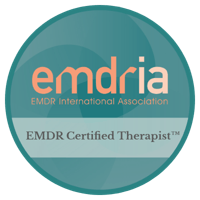A Path to Healing Trauma, Depression, Anxiety, and Stress
When it comes to healing from trauma, depression, anxiety, and stress, one therapeutic approach is making a profound impact: Eye Movement Desensitization and Reprocessing (EMDR). You may have heard of this method, but what exactly is EMDR, and how can it help those struggling with emotional and psychological burdens? In this post, we’ll break down the basics of EMDR, how it works, and why it’s so effective.
Understanding EMDR Therapy
EMDR stands for Eye Movement Desensitization and Reprocessing. Developed in the late 1980s by Dr. Francine Shapiro, it is a psychotherapy approach designed to help people process and heal from traumatic experiences and other distressing life events. Unlike traditional talk therapy, EMDR does not require clients to extensively discuss their trauma. Instead, it focuses on allowing the brain to process unresolved memories in a way that reduces their emotional charge.
The core idea of EMDR is that unprocessed traumatic memories can get “stuck” in the brain, causing emotional and psychological distress. These stuck memories often manifest as symptoms of trauma, such as flashbacks, nightmares, or emotional numbness, and can contribute to conditions like depression, anxiety, and chronic stress. EMDR helps “unstick” these memories, allowing the brain to reprocess them in a healthier way.
How Does EMDR Work?
EMDR therapy is structured into eight phases, each carefully designed to guide clients through the healing process:
- History Taking: The therapist gathers information about the client’s history, identifying the issues and memories that need to be addressed.
- Preparation: The therapist explains EMDR and teaches the client coping skills, such as relaxation techniques, to ensure they feel safe and supported during the sessions.
- Assessment: The therapist identifies specific memories, beliefs, and emotions related to the trauma that will be targeted in therapy.
- Desensitization: This phase involves bilateral stimulation, such as guided eye movements, tapping, or auditory tones. These techniques help the brain process traumatic memories.
- Installation: Positive beliefs and thoughts replace the negative ones associated with the trauma.
- Body Scan: Clients observe any lingering physical sensations connected to the traumatic memory, allowing them to process residual stress.
- Closure: The session ends with techniques to bring the client back to a sense of calm and stability.
- Reevaluation: Progress is reviewed, and the therapist determines whether further sessions are needed.
The bilateral stimulation used in EMDR, such as eye movements, is thought to mimic the natural processing that occurs during rapid eye movement (REM) sleep. This process helps the brain “digest” the trauma, reducing its emotional intensity.

Who Can Benefit from EMDR?
EMDR is widely recognized as an evidence-based treatment for trauma, including Post-Traumatic Stress Disorder (PTSD). However, its applications extend far beyond trauma. Research and clinical experience show that EMDR can be effective for individuals struggling with:
- Depression: EMDR can help uncover and reprocess underlying emotional pain contributing to depressive symptoms.
- Anxiety: For individuals with generalized anxiety disorder, social anxiety, or panic attacks, EMDR can reduce the intensity of distressing thoughts and feelings.
- Stress: Chronic stress, whether related to work, relationships, or life transitions, can be addressed through EMDR by targeting the root causes.
- Grief and Loss: EMDR provides a way to process complicated grief, allowing individuals to move forward without being stuck in overwhelming sadness.
Why is EMDR So Effective?
The power of EMDR lies in its ability to tap into the brain’s natural healing processes. By addressing the root cause of distressing symptoms—unprocessed memories—EMDR provides relief that is often more lasting than simply managing symptoms with coping strategies alone.
Unlike traditional talk therapy, EMDR requires less verbal discussion of traumatic events, which can be particularly beneficial for individuals who find it difficult to articulate their experiences. Moreover, EMDR is a relatively short-term therapy, with many clients experiencing significant improvements within 6-12 sessions.
What to Expect During an EMDR Session
If you’re considering EMDR therapy, it’s natural to wonder what a session will feel like. During the desensitization phase, you’ll focus on a specific memory while engaging in bilateral stimulation, such as following the therapist’s finger movements with your eyes. You may notice shifts in how you feel or think about the memory as your brain begins to process it. Many clients describe feeling lighter and less burdened after just a few sessions.

Is EMDR Right for You?
If you’re struggling with trauma, depression, anxiety, or stress, EMDR could be a transformative approach for you. This therapy is backed by decades of research and has helped countless individuals regain control over their lives. Whether you’ve experienced a single traumatic event or a series of distressing experiences, EMDR offers a path to healing.
Take the Next Step
Elnita Ottey is an EMDRIA certified EMDR therapist offering both in-person and virtual sessions. In-person sessions are available in Monroe, NC, and the Charlotte, NC Metro region. Virtual sessions are available to clients in Oregon, Oklahoma, Colorado, South Carolina, Tennessee, and North Carolina.
Are you ready to explore how EMDR can help you heal from trauma and alleviate symptoms of depression, anxiety, and stress? Reach out to Elnita Ottey today to learn more about this groundbreaking therapy and how it can change your life for the better. Remember, healing is possible, and you don’t have to face it alone.








